Wstęp (Barbara Wolska, Agnieszka Bąbel, Marek Pąkciński)
Temat XX serii „Napisu”: „W soczewce”. Wybrane aspekty wizualności w kulturze XIX wieku zainspirowany został kluczowym dla nowożytności faktem – oto świat stał się obrazem, postrzeganym z punktu widzenia człowieka. Dlatego wiele problemów wynikających z wszechobecnej wizualności (oraz związanej z nią metaforyki), a równocześnie ze swoistego kulturowego konfliktu wokół tego zagadnienia, który nasilił się w tej epoce, zostało poruszonych w artykułach prezentowanego tomu. Analizują one także aspekt wizualności, związany z rozwojem optyki, badań nad mechanizmami widzenia (anatomią i fizjologią oka) oraz sposobami postrzegania świata, które funkcjonowały w szeroko pojmowanym wieku XIX. Autorzy próbują odpowiedzieć na pytanie, w jaki sposób przyrządy optyczne (takie jak teleskop, mikroskop, coraz popularniejsze i doskonalsze okulary, aparat fotograficzny, latarnia magiczna, fotoplastykon) wpływały na metody poznawania, utrwalania i opisu świata? Jak funkcjonujące powszechnie stereotypowe skojarzenia na równi z indywidualnymi predyspozycjami wizualnymi artystów oraz ich wadami wzroku odzwierciedlały się w formie i kształtowały treść tworzonych przez nich dzieł sztuki? Jak wyglądał świat widziany przez mikroskop przyrodnika, teleskop astronoma, lupę lekarza, okulary dziennikarza i pisarza?
Część tematyczną rocznika (dział Rozprawy i materiały) stanowią teksty poświęcone romantycznym mitom widzenia, chorobom wzroku twórców oraz ich wpływowi na postrzeganie świata (przypadki Zygmunta Krasińskiego i Bolesława Prusa), a także wizualności przedstawień (iluzja i złudzenie optyczne w Oświeceniu, dziewiętnastowieczne wzorce oglądania wystaw, kultura cyrkowa końca wieku), przyrządom i paradoksom optycznym (mikroskop jako instrument-metafora, związki między postrzeganiem a halucynacją w Fantazyjnych objawach zmysłowych Wiktora Feliksa Szokalskiego), czy wreszcie wizualnej wzniosłości w dziewiętnastowiecznym dyskursie naukowym. Materiały te są rozwiniętymi wersjami referatów, wygłoszonych na konferencji naukowej, zorganizowanej w Siedlcach w dniach 29-30 maja 2014 r. przez Uniwersytet Przyrodniczo-Humanistyczny w Siedlcach, Uniwersytet Warszawski, Instytut Badań Literackich PAN oraz Towarzystwo Literackie im. Adama Mickiewicza.
W części Varia zostały zamieszczone wybrane fotografie z cyklu fotograficznego Pauliny Stawskiej Tak to widzę…, który jest artystyczną wizją postrzegania świata ludzi z wadami wzroku – razem z najlepszymi pracami studentów Pracowni Projektowania Intermedialnego Wydziału Sztuki Mediów warszawskiej Akademii Sztuk Pięknych, wyłonionymi w konkursie W soczewce, oraz komentarzami autorów i artykułem wprowadzającym dr Katarzyny Stanny.
Numer uzupełniają dwa wyjątkowo bogate w tym roku działy: Pasje i potyczki edytorskie i tekstologiczne (tu opracowania tekstów Jana Chrzciciela Albertrandiego, Cypriana Kamila Norwida i Jana Brzechwy) oraz Recenzje, które prezentują niedawno opublikowane książki, dotyczące literatury i kultury wieku XVIII i XIX.

Wstęp (Barbara Wolska, Agnieszka Bąbel, Marek Pąkciński)
Małgorzata LISICKA
Iluzja, wizje i maskarada w rozrywkach polskich oświeconych na przykładzie komedioopery Stanisława Kostki Potockiego i pamiętnika Anny Potockiej
Artykuł (PDF) Show abstract Hide abstract
The article presents the use of illusion and vision in the literature and culture of the Enlightenment on the example of the play Umarły żyjący, czyli Diabeł Włoski [‘Living Dead or the Italian Devil’] by Stanislaw Kostka Potocki, and the first volume of the Diary by Anna Potocka from Tyszkiewicz family. It analyses special effects used in the theatre and described in these texts, as well as their motives present in the character of an astrologer and illuminatus inspired by the person of Alessandro Cagliostro. The phenomena of the masquerade and mystification shown here were a popular entertainment of the eighteenth-century aristocracy, and a tool serving fraudsters to reach the target, as well as a weapon used by muckrakes.
Danuta KOWALEWSKA
Sposoby widzenia. Optyka w służbie oświeceniowego racjonalisty
Artykuł (PDF) Show abstract Hide abstract
“Seeing is to some extent an art to be learned” (William Herschel). Thanks to the new optical tools human perceptual capabilities greatly increased. Cognitive standards have also changed. “The magical glasses” began to modify the image of reality, so the science could deal with objects that had never seen before. The use of a telescope to study celestial bodies caused that universe gained an extra dimension that had to be tamed and explained.
My text refers to the impact that the development of optics has on perception of the world in the Age of Lights. I try to show when and how optical devices, assisting the reason in explaining and rationalizing supernatural phenomena, allowed people in the Enlightenment – in literal and figurative sense – to see through, eventually becoming an attribute of the rationalist from this period.
The analysis is focused on selected literary and “utility” texts (Jan Bohomolec’s Diabeł w swojej postaci [‘A Devil in his Real Shape’]), in which popular instruments (the microscope) and optical phenomena (such as an optical illusion) in the eighteenth century appear.
Wojciech KALISZEWSKI
Oko Stanisława Trembeckiego. Szkic
Artykuł (PDF) Show abstract Hide abstract
The article discusses the problem of visual perception in the framework of poetic view of the world. The issue of perception and cognition of reality has been outlined in the perspective of selected philosophical analysis of the Enlightenment (Diderot, Condillac). Literary material, illustrating these considerations, is represented by fragments from Stanislaw Trembecki’s work.
Teresa WINEK
Oko, okulary, autografy – przyczynki do historii literackiej Zygmunta Krasińskiego
Artykuł (PDF) Show abstract Hide abstract
Early works by Zygmunt Krasinski were full of travel reports and descriptions of acknowledged landscapes. They demonstrate a particular visual sensitivity of the young writer. Starting in 1832 an eye disease prevented the development of this writing. The poet saddled with amblyopia wrote about his difficulty in letters to family and friends.
The illness was treated by him as a psychosomatic – the effect of disturbances on the way between the eye and the heart that was wounded by the inability to participate in the November Uprising. The consequences of the disease (restrictions of social life, loneliness, inability to read) were recognised by Krasinski as circumstances conducive to intellectual work (in his writings the role of internal dialogue and philosophical debate systematically increased). The disease, however, imposed unnatural conditions on the writer’s work (the need for a secretary assistance), which limited the number of autographs, further reduced by the family in the course of organizing the family archive.
Jerzy BOROWCZYK
Ćwiczenia optyczne i duchowe. Oko i umysł w utworach lirycznych Krasińskiego i Słowackiego
Artykuł (PDF) Show abstract Hide abstract
In this paper I undertake the analysis and interpretation of the poems and other statements of two romantic poets – Zygmunt Krasinski and Juliusz Slowacki. I lean primarily on the several lyrics of the first of them, created in the late 30s and early 40s of the nineteenth century, as well as on the statement from literary criticism – Kilka słow o Juliuszu Słowackim [‘Some words on Juliusz Slowacki’]. In the case of the second of the authors I am mostly interested in his mystical poetry, written in the years 1842-1849, but I also recall his poems: Godzina myśli [‘The Hour of Thoughts’] and Beniowski.
Selected works of both authors are considered as examples of the poetic statement, in which a huge role is played by widely understood visuality (or more broadly – sensuality) and optics. An important context of my inquiries is placed in the essay by Maurice Merleau-Ponty devoted to the relationship of the eye and the mind in painting.
Visuality in Krasinski’s poems is a useful tool to express feelings, past and expected experiences, and extraterrestrial, eternal fulfillments. Metaoptic poet reflections provide material for the construction of images, which are equally effects of looking and results of creative efforts.
Slowacki’s epiphanic-mystical experience of the years 1842-1844, recognized by the poet as revelations, brought about the need to look beyond the boundaries of the physical world. Spiritualist radicalism of his late works contribute to the intensification and metaphorical transformations of the sense of sight. The eye and the mind can be found here in the mutual entanglement, acting at the same time as one of the main vehicles of poetry and the poet epistemological effort.
My conclusion is the finding that the visual-optical themes in the poetry of both authors are effects of extremely careful acts of seeing, and also bring in-depth analysis of the work of the sense of sight (both bodily and internal).
Damian Włodzimierz MAKUCH
„Fantazyjne objawy zmysłowe” Wiktora Feliksa Szokalskiego – projekt obserwatora z połowy XIX wieku
Artykuł (PDF) Show abstract Hide abstract
The author analyses Fantazyjne objawy zmysłowe [‘Fancy Sensory Symptoms’] by W.F. Szokalski in the context of changes of the nineteenth-century observer. Full of contradictions synthesis of Polish ophthalmologist is a register of transformations in the visual field observed by other researchers (Jonathan Crary), but also the concept of embodied and active look does not fulfil its depth. In the article Szokalski will be treated as a representative of the late-idealist formation, which is aware of restrictions that “disenchantment of the world” causes (epistemological subjectivism resulting from contemporary knowledge of the nervous system, modernist reflections on the contingency of science). However, the ophthalmologist exceeds perceptual distortions and dilemmas of psychophysiology by means of recalling the romantic spirit, which acting on the body backwards, brings the man closer to the Truth. Szokalski turns out to be a representative of the formation that Agata Bielik-Robson called “modernity with anxiety”. This formation is looking for a new sacrum that in the name of the new subject deals rhetorically with entanglement in the body, but also – paradoxically – still remains under its influence.
Agnieszka BĄBEL
Świat w powiększeniu. Dziewiętnastowieczny mikroskop jako instrument i jako metafora (na przykładzie twórczości Bolesława Prusa)
Artykuł (PDF) Show abstract Hide abstract
The text is devoted to the invention of the microscope and its image in the literature of the nineteenth century. An outline of the history of this optical tool provides a background for presenting the nineteenth-century microscope as a sign of a certain cognitive attitude, or characteristics of a protagonist, and finally – of the way of seeing the world in selected texts by Boleslaw Prus (Słowko o krytyce pozytywnej [‘A Word on Positivist Criticism’], Kroniki [‘Chronicles’], The Fungi of this World, The Doll, The Emancipationists), supplemented with examples derived from the “utility literature” and memoirs (Orgelbrand’s Encyklopedia powszechna [‘Popular Encyclopaedia’], household guides or memories of one of the first female students in Krakow – Jadwiga Klemensiewiczowa from Sikorski’s family).
Anna WIETECHA
Logika spojrzenia w „Ogrodzie Saskim” Bolesława Prusa
Artykuł (PDF) Show abstract Hide abstract
Article is an interpretation of Boleslaw Prus’s short story Ogrod Saski [‘Saski Garden’]. It’s spine consists in motive of visibility, and it’s background – sensuality in general, or sensual feelings considered by author as vitally important in the urban space of the second half of the nineteenth century. Gaze has its stigmatizing character and can be used as an instrument of oppression, while other senses widen the range of Prus’s heroes experiences and allow for seeking in text an antidote for “sight-concentrated” nature of urban space (here – the space of Warsaw).
Agata GRABOWSKA-KUNICZUK
„Sąd oka”? O sposobach postrzegania świata w twórczości Bolesława Prusa
Artykuł (PDF) Show abstract Hide abstract
The article is an attempt to analyse and interpret the visual aspect of the work of Prus, and especially the impact of the writer’s diseases (including a deepening vision defect, agoraphobia) on the ability to perceive reality and the creation of the world presented in the works (based on the novels: Emancipated Women, The Doll, Dzieci [‘Children’]) and on the construction of Prus’s characters in order to find an answer to the question: how do they look and what do they see?
The text presents a portrait of Prus short-sighted (experienced also by a hyperopia); how the writer perceives and uses the descriptions of the colours; how he creates an image of the omnipresent four eyes-protagonist in his works; and finally – how he prepares to work, gathering materials in his notebooks, which can be described as his writing workshop. There are the author’s notes on the sight, its role and place among other senses.
With time other sources of the world knowledge begin to dominate over the more and more imperfect observation: his experience, acquired knowledge, and above all – feeling.
Małgorzata LITWINOWICZ-DROŹDZIEL
Wiek ekspozycji. Kilka słów o praktyce dziewiętnastowiecznych wystaw
Artykuł (PDF) Show abstract Hide abstract
The text refers to the phenomenon of the nineteenth-century exhibitions and considers them as a practice where important issues for modern visual and cognitive experience are accumulated. The basic category, through which the author tries to describe this phenomenon, is attention in the sense that Jonathan Crary gives it. The exhibition is seen here as an insistent, though unsuccessful attempt to overcome the crisis of organising perception, finding its relationship in a number of literary genres and practices that gain popularity in the age of modernity – such as a travel guide and catalogue.
Agata SIKORA
Jak należy oglądać wystawę, czyli słów kilka o dziewiętnastowiecznej tęsknocie za przejrzystością doświadczenia
Artykuł (PDF) Show abstract Hide abstract
In my article I analyse how in the Polish press from the second half of the nineteenth century an experience of the exhibition was projected and presented. I am mainly interested in the opposition between chaotic experience (no orientation in space, lack of knowledge about what to look at) and structured visual experience. Journalism of that period expresses the belief that the spatial order of the exhibition should transparently structure the experience: the visitor always has to know what he is looking at (thanks to catalogues, maps, signatures, a suitable arrangement of exhibits), easily orient himself in space (thanks to the appropriate organization), to know how to move.
He should also behave properly: watch and learn. The sense of sight is to dominate the touch, hearing, taste, smell, analytical reception – over active participation. The visitor is therefore expected to be a passive spectator in Richard Sennett’s sense, excluded from the active shaping of interpretation, interaction and space.
However, the messages dealing with how the exhibition should be experienced simultaneously reveal concerns about “inappropriate” reception. These concerns manifest themselves in images of the space post-exhibition (rotting flowers, lost umbrellas and children), comments on the “wrong” behaviour of the audience, criticism on how the exhibition was organized. Planned in advance visual order of the project therefore remains in constant tension with what goes beyond it – chaos, spontaneity, multi-sensuality, melancholy. This ambivalence seems to indicate that the exhibition was a specific attempt to “subdue” the modern experience (the rate of change, motion, opacity) by limiting it in time and space, organization, regimentation, bringing to the visual aspect.
Anna BARCZ
Zmierzch cyrku w „Zwierzyńcu” Antoniego Ferdynanda Ossendowskiego na tle rozkwitu kultury cyrkowej w XIX wieku
Artykuł (PDF) Show abstract Hide abstract
Despite the fact that Ossendowski’s writings do not belong to the most prominent critical voices of the nineteenth century model of a circus they are original for the Polish history of non-anthropocentric literature. This approach to the circus becomes a kind of dominant in one of Ossendowski’s texts and allows to extract Zwierzyniec [‘Bestiary’], written in 1931, from unflattering reviews by directing the text into a more significant and zoocentric forms of narration endowed in the text.
Marek PĄKCIŃSKI
Brakująca granica: wizualność a estetyczna wzniosłość w tekstach popularnonaukowych przełomu XIX i XX wieku
Artykuł (PDF) Show abstract Hide abstract
The article contains an analysis of the rhetoric of selected texts from Polish popular press of the late nineteenth and early twentieth century (“Tygodnik Ilustrowany”, “Ogniwo”, “Niwa”, and “Ateneum”), mainly related to the visual aspect of astronomical phenomena. The interpretation of these texts has been carried out here in the context of modern philosophy (especially of the notion of the sublime from Kant’s Critique of Judgement, as well as one of the last attempts to create metaphysical “myth” in The Ages of the World treatise by Friedrich Wilhelm Joseph von Schelling) and contemporary interpretation of Plato’s philosophy created by Eric Voegelin and Paul de Man (interpretation of Kant’s transcendental aesthetics in the Aesthetic Ideology). Creating such a constellation of texts is used to answer the question: how the specific presentation of the findings of science (via the mathematical and the dynamical sublime forms) becomes a tool for promoting a modern worldview with its characteristic features: depersonalization of views on the cosmic order, depriving them of emotional components, as well as displacement of existential issues (related to the philosophical “myth of the soul”) in the private sphere, without the effects on the social dimension of morality and politics.
Barbara WOLSKA
Widziany z oddalenia kraj ojczysty. Oda Jana Chrzciciela Albertrandiego „O miłości ojczyzny” i jej konteksty
Artykuł (PDF) Show abstract Hide abstract
The ode O milosci ojczyzny [‘On the Love of Home Country’] by John Baptist Albetrandi is a translation of Jean Baptiste Louis Gresset’s Sur l’amour de la patrie, published in Warsaw literary journal “Zabawy Przyjemne i Pożyteczne” in 1770. The text accompanied by explanatory notes was preceded by an introduction where a figure of Polish translator was presented, emphasizing genres used by him and leading threats of his literary work, and also the work was discussed. The attention was paid, among others, on the topicality of the subject during the tumultuous events of the Bar Confederation. Love radiant with nostalgia for native country in the time of confusion, anxiety, mutual hostility and prejudice was to realize what should unite the quarrelling society. In the section prior to the text of Albertrandi’s / Gresset’s ode, it was also showed that this and other works of French writers that Albertrandi translated in later years – during the threat of partition of the lands of the Poland – were deliberately chosen by him, and that through them he explained superior values to his countrymen, and he made allusions and evaluations of the difficult political situation. A similar tactic was used by him in his own philosophical and moral odes by undertaking universal subjects (time, hope, war), however, in terms strictly corresponding with the current political life of his country.
Jan Chrzciciel Albertrandi, O miłości ojczyzny oda (opr. B. Wolska)
Małgorzata LISICKA
Wokół utworu Cypriana Norwida „Do Nikodema Biernackiego”
Artykuł (PDF) Show abstract Hide abstract
The aim of the article is to present controversies related to one of the two remaining manuscripts of Cyprian Norwid work: Do Nikodema Biernackiego. The story of its origin and what has happened to the two sources served as a background for considerations. The significant differences between the manuscripts and published versions were also discussed. In order to clearly display it, a transliteration of line according to the autograph was added.
Cyprian Norwid, Do Nikodema Biernackiego (transliteracja autografu)
Aleksandra KASICA
W kręgu Poezji wybranych Antoniego Langego. Recenzja wydawnicza Jana Brzechwy
Artykuł (PDF) Show abstract Hide abstract
The article presents a publishing review of Antoni Lange’s collected poetry written by Jan Brzechwa. Lange’s poems were published in 1950 by the “Czytelnik” Publishing House, which at that time Brzechwa cooperated with. The manuscript of the review from 1980 was given over by the poet’s widow, Janina Brzechwa, to Adam Mickiewicz Museum of Literature in Warsaw (pressmark: 705, k. 41-42).
Jan Brzechwa [recenzja wydawnicza Poezji wybranych Antoniego Langego]
Tomasz WIŚLICZ, Upodobanie. Małżeństwo i związki nieformalne na wsi polskiej XVII-XVIII wieku. Wyobrażenia społeczne i jednostkowe doświadczenia, Wrocław 2012 (Justyna Bąk, Gorzka przychylność czy słodkie rozmiłowanie? Rzecz o małżeństwie i związkach nieformalnych na wsi polskiej XVII-XVIII wieku)
Wiek XVIII (nie tylko) w szkole. Literatura – historia – kultura – sztuka, pod red. Bożeny Mazurkowej z udziałem Małgorzaty Marcinkowskiej, Katowice 2013 (Magdalena Falska, Niestandardowo o Oświeceniu)
Elżbieta Z. WICHROWSKA, Twoja śmierć. Początki dziennika intymnego w Polsce na przełomie XVIII i XIX wieku, Warszawa 2012 (Katarzyna Kadzidło, Intymistyka ujarzmiona. Słowo o książce „Twoja śmierć…”)
Wojciech TOMASIK, Inna droga. Romantycy a kolej, Warszawa 2012 (Wojciech Kaliszewski, Romantyczne (i nie tylko) drogi żelazne)
Bolesław Prus, W Warszawie. Wybór z „Kronik”, wybór i wstęp Samuel Sandler, oprac. Agnieszka Bąbel i Agata Grabowska-Kuniczuk, Warszawa 2013 (Barbara Bobrowska, Warszawski fotoplastikon Prusa)
Bartłomiej SZLESZYŃSKI
O Bolesławie Prusie, upowszechnianiu wiedzy i wydawaniu „Kronik” słów kilka
Artykuł (PDF) Show abstract Hide abstract
In reference to Professor Barbara Bobrowska review, the text presents reasons why Boleslaw Prus’s W Warszawie. Wybor z „Kronik” [‘In Warsaw. Selection of Chronicles’] adopted such form, and not another, and how this form results from general assumptions regarding activities to promote knowledge about The Doll’s creator and his work. The author’s position on what disseminating actions should be carried out to transmit knowledge on literature and culture from the second half of the nineteenth century to wider audience than before was also presented. The last section provides some comments on the defects of the Kroniki edition made by a team led by Professor Zygmunt Szweykowski.
Katarzyna STANNY
Pryzmaty postrzegania: estetyka, ideologia, interpretacja w sztukach pięknych
Artykuł (PDF) Show abstract Hide abstract
Analising a subject W soczewce. Wybrane aspekty wizualności w XIX wieku [‘In the eyelens: chosen aspects of visuality in the nineteenth century’] from a perspective of fine arts, the article addresses a few various threads of interpretation of this phenomenon. One of them belongs to painting and technical side of impressionists, the other – eye defects related to ophthalmology and medicine, having an impact on translation of the real world into an artistic image, while another – a way of looking through the prism of ideological perceptions and interpretations in art. Despite their differences, each is equally important. It can be infinitely many interpretations of reality, which is why it is so difficult to talk about objectivity of looking through individual lens that each of us has from the moment of birth.
„W soczewce” – prace studentów ASP
Komentarze autorów do fotografii
Noty o autorach artykułów

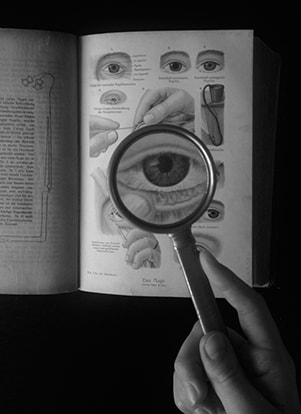
Alicja Ewertowska
Na fotografii została wykorzystana ilustracja z niemieckiego wydania książki Die Frau als Hausärztin (‘Kobieta lekarką domową’) z 1901 roku. Ta uniwersalna księga, oferowała kompleksowe doradztwo we wszystkich kwestiach związanych z życiem codziennym kobiety: umysłu, ciała, stylu życia, diety, zdrowia, higieny, małżeństwa, dzieci i moralności. Jako pierwsza poruszała tematy tabu, takie jak masturbacja, homoseksualizm, cudzołóstwo, antykoncepcja czy niepłodność. Jak na tamte czasy, była to niewątpliwie rewolucja, która zmieniła postrzeganie cielesności, zmysłów oraz otaczającego nas świata.

Weronika Kwiatkowska-Forero
Soczewka kształtuje inny sposób patrzenia. Szczególnie jej wady w połączeniu z indywidualnymi predyspozycjami, w tym także z niedoskonałościami naszego wzroku, otwierają świat fantastycznych kształtów i proporcji, pobudzają wyobraźnię. Codzienne otoczenie zmienia się w niezwykły obraz.
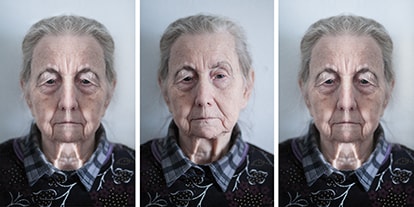
Gabriela Sołowiej
Spójrz w lustro. Na pozór wszystko wygląda idealnie i równo. Zamknij oczy.
Spójrz jeszcze raz. Zgodnie z osią czasu z dnia na dzień jesteśmy doskonalsi.
Patrząc na oś symetrii jesteśmy coraz bardziej asymetryczni.
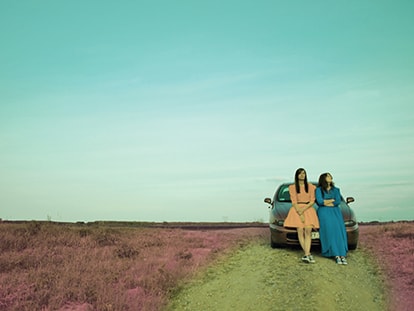
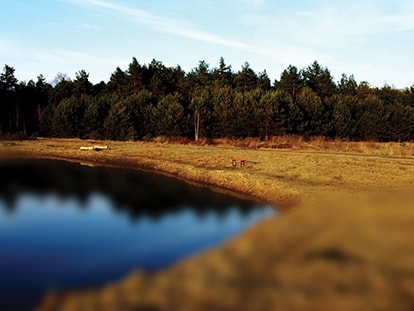

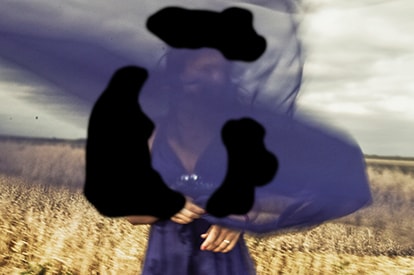
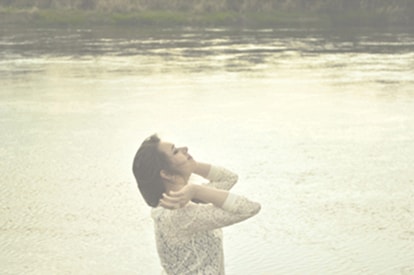

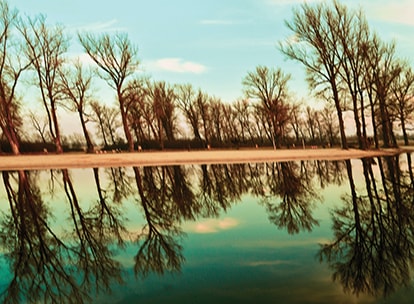
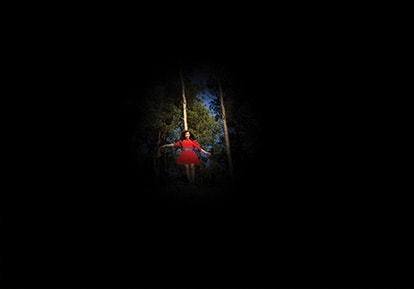
Paulina Stawska (1)
Jako osoba związana ze sztuką, posługując się aparatem fotograficznym czy pędzlem bądź innym narzędziem, pragnę w ten sposób wyrazić siebie, przedstawić swój punkt widzenia. Niekiedy już samo tworzenie pozwala mi uwolnić emocje, odczuć zadowolenie i spełnienie. Jednak głównym powodem tworzenia jest chęć dzielenia się zauważonym pięknem z innymi. Dlatego pragnę zwrócić szczególną uwagę na oczy, które są niezbędne do podziwiania tego, co artysta może stworzyć, pomijając oczywiście wszystkie sztuki skupiające się na pobudzeniu innych zmysłów, jak np.: słuch, dotyk czy węch.
Każdy z nas posiada inną wrażliwość, powodem tego jest nasze usposobienie, cechy charakteru oraz wspomnienia. Ale czy to, w jaki sposób widzimy, może kształtować nasz świat? Nie chodzi mi o to, co wyrywamy ze świata przetwarzając go, co wyłapujemy osobistą obserwacją, chodzi mi o to, jak widzimy…
Kilka fotografii z wizualizacją różnych wad wzroku tworzy spójny projekt, który ma również za zadanie ukazać szerzej pojmowaną odmienność i w zestawieniu ze sobą umożliwić podjęcie próby jej akceptacji. Prace ukazują inny punkt widzenia – dosłownie i w przenośni – ponieważ „dodanie” do zdjęcia określonej wady, naniesienie jej w odpowiedni sposób nadaje zdjęciom nowe znaczenie, przede wszystkim estetyczne. Zdjęcia „ze skazą” nabierają innego sensu, stają się spójne z nią, zmieniając ją z problemu w świadomie przemyślaną kompozycję. W ten sposób można pogodzić zwrócenie uwagi na problem zaniedbywania istotnego w naszym życiu zmysłu wzroku z dodaniem otuchy wszystkim cierpiącym na któreś z pokazywanych schorzeń. W przypadku tego cyklu wada zamienia się w zaletę, wszystko jest bowiem kwestią interpretacji i odpowiedniej kompozycji, która zawiera w sobie przekaz emocjonalny. Najbardziej fascynująca dla mnie jest mnogość sposobów percepcji otaczającego nas świata, łącząca te czynniki, na które mieliśmy wpływ, z tymi, którymi zostaliśmy „obdarowani” przez los – a punktem wyjścia jest patrzenie.
Moją inspiracją z pewnością byli także artyści, których oryginalność wynikała poniekąd z ułomności, jaką była wada wzroku. Tu należy się ukłon w stronę tych, którzy potrafili mimo przeciwności nie zrezygnować z pasji, gdy dawniej wady wzroku determinowały życie stając się przeszkodą w wykonywania zawodu i normalnym funkcjonowaniu. Są tacy, którzy właśnie dzięki swojemu niepowtarzalnemu stylowi przetrwali w pamięci jako wielcy artyści. Należą do nich z pewnością Claude Monet czy Edgar Degas. To z kolei budzi wątpliwości i pytania, czy wybór tematyki oraz dobór kolorów jest efektem zamierzonym czy wynikiem choroby? „Wprawdzie nikt nie twierdzi, że istota kreatywności człowieka tkwi w symptomach chorobowych, lecz przyjrzenie się dysfunkcjom i niedomaganiom organizmu, rzuca wiele światła na normalne procesy i zachowania obserwowane w twórczości artystycznej.”2 Analizując płótna mistrzów malarstwa w zakresie szczegółów kompozycji obrazu można doszukać się przypadłości charakterystycznych dla danej wady wzroku. Prace Claude’a Moneta z wiekiem zaczynały być coraz bardziej abstrakcyjne. Estetyczną rewolucję wymusiła choroba, powodująca częściowe niedowidzenie. Tym sposobem Monet w swoich obrazach coraz mniej posługiwał się konturem, granice przedmiotów były rozmazane, a dominującą barwą stał się kolor żółty. Edgar Degas również cierpiał na przypadłość uszkodzenia dna oka. James A. Whistler prawdopodobnie miał problemy z odróżnianiem barw. „W jego obrazach przejście z jednego tonu w drugi jest tak mgliste, że Oskar Wilde stwierdził: «Nie było londyńskiej mgły do czasu, aż namalował ją Whistler». Daltonizmu w jego przypadku możemy się tylko domyślać ze względu na fakt używania przez niego kolorów: żółtego i niebieskiego obok kolorów natury, odpowiednich dla chromatycznej rzeczywistości tych, którzy cierpią z powodu tego zaburzenia.”3 U El Greco także doszukiwano się powiązania astygmatyzmu z malowaniem przez niego wydłużonych postaci, jednak po prześwietleniu jego płócien okazało się, że wykonując szkic El Greco bezbłędnie nanosił proporcje ludzkiego ciała, więc w jego przypadku był to raczej świadomy zabieg artystyczny4.
Również w przypadku mojego cyklu zmiana kolorów, wszelkie rozmycia i zaciemnienia są celowe, „uszkadzając” fotografie, które mają służyć jako niewielki wycinek – tworzę imitację obrazu widzialnego oczami po to, aby lepiej uzmysłowić ludziom, że obraz, jaki widzimy, nie jest jedynym. W ten sposób ludzie z wadą wzroku niezwiązani ze sztuką mogą nieświadomie zniekształcać postrzeganą rzeczywistość, co nadaje jej wymiar artystyczny. To właśnie chcę przedstawić za pomocą swoich prac.
Inny punkt widzenia, nie zawsze spowodowany tylko odmiennymi przeżyciami, tworzy bądź zmienia cały zamysł artystyczny, na co nierzadko nie mamy wpływu. Poszczególne kadry nie mają tylko naśladować rzeczywistość – wtedy takie fotografie byłby odpowiednie jedynie do zilustrowania książki o wadach wzroku polecanej okulistom. Moim zadaniem było jak najwierniejsze odzwierciedlenie wady i „wpasowanie jej” w fotografię artystyczną tak, by wada nadała nowe znaczenie całej kompozycji. Tylko w taki sposób może zmieniać się nasz punkt widzenia na percepcję. Mam nadzieję skłonić oglądających do refleksji nie tylko nad wadami wzroku, ale nad wszystkim, co posiadamy, a co możemy utracić przez własną nieostrożność czy zaniedbanie.
1 Komentarz ten jest fragmentem pracy licencjackiej powstałej pod kierunkiem dr Katarzyny Stanny na Wydziale Sztuki Mediów ASP w Warszawie, pt. „Tak to widzę”. Różnice w widzeniu i odbieranillustration-comment-captioniu rzeczywistości oraz sztuki, spowodowane wadą wzroku. Nadawanie tym samym nowego znaczenia i wymiaru obrazom. Chęć zwrócenia uwagi na problemy odmienności w interpretacji przestrzeni.
2 P. Markiewicz, P. Przybysz, Sztuka tworzenia, „Charaktery” 2007, nr 10.
3 optometriakarczewski.pl/zdrowie/ciekawostki (stan z dn. 22 marca 2015 r.).
4 P. Markiewicz, P. Przybysz, op. cit.

Weronika Majewska
„Rozsądku, jakżeż mnie nudzi twoje ziewanie” – patrzę, widzę: linearnie, binarnie, konstruktywnie, dekonstruktywnie, hybrydowo, performatywnie. Do cholery, co to znaczy? Nic nie znaczy. Przecież jest tylko widno, kolorowo i z kominów dym nie leci.
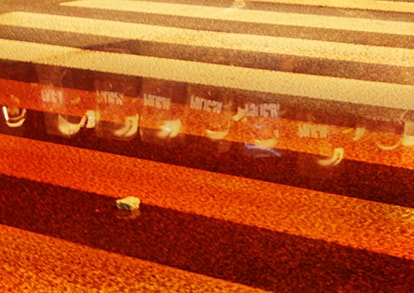
Zuzanna Pałkowska
Każde wydarzenie jest inne w oczach każdego ze świadków.
Każda fotografia, choć przedstawia to samo zdarzenie, jest innym, indywidualnym punktem widzenia. Warszawa, 11 listopada 2014 r.
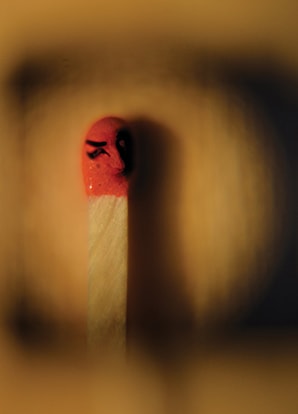
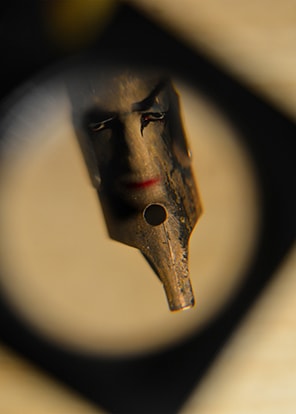
Marta Bystroń
Przedmioty wokół nas są zbudowane z tej samej materii co my. Przyglądając im się bliżej można zauważyć ich własny charakter, a nawet osobowość, którą warto sportretować.
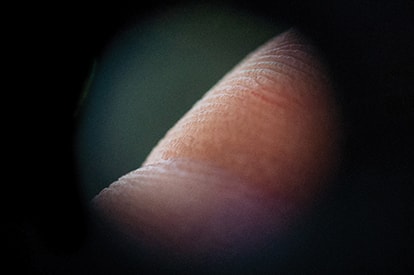
Stanisław Klucznik
Przez ciągły bieg w naszym życiu często zapominamy o najmniejszych szczegółach, które pozwalają nam się identyfikować, określić kim jesteśmy. Dlatego warto przystanąć na moment, przyjrzeć się samemu sobie z bliska i przypomnieć sobie, że każdy z nas jest niepowtarzalny i wyjątkowy.
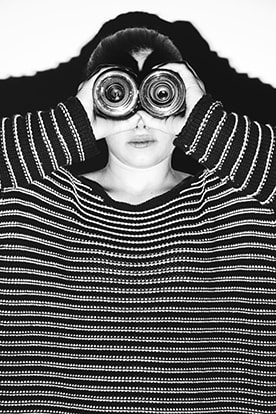
Paulina Szczepanek
Intensywny postęp badań i wynalazków optycznych w XIX wieku pozwolił na rozwinięcie możliwości górującego zmysłu wzroku. Człowiek spragniony wiedzy uciekał się do wynalazków, które pozwalały mu więcej odbierać, a w efekcie lepiej rozumieć świat niż do tej pory. Posiłkowanie się sprzętem optycznym w życiu codziennym stało się niepostrzeżenie tak oczywiste, jakby było całkowicie naturalne. Tę intrygującą dla mnie kwestię postanowiłam zwizualizować w pracy fotograficznej.
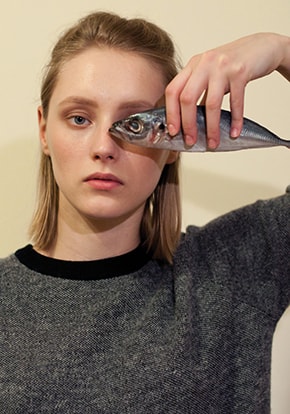
Magdalena Wieczorek
Bez komentarza.
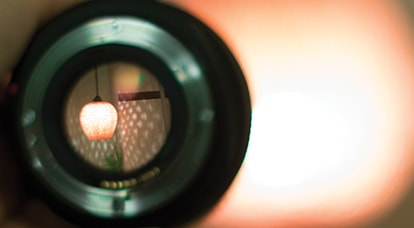
Aleksandra Łukaszewicz
Bez komentarza.
